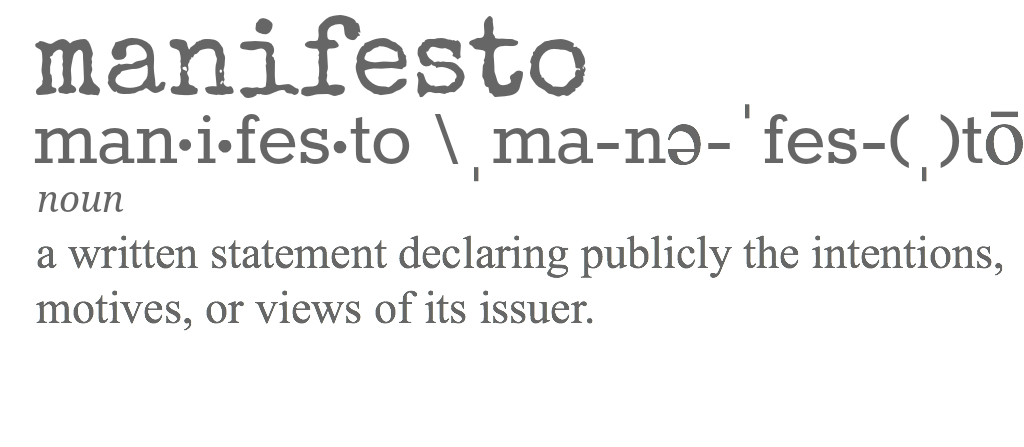Principles of Personal Agility
Recently, I’ve been doing a lot of reflecting on how to increase personal agility. No, I’m not talking about doing somersaults or some crazy yoga poses. I’m speaking of the ability to focus on the delivery of value and be adaptable in what I do every day. When the Manifesto was written back in 2001, there were representatives from Extreme Programming, Scrum, DSDM, Adaptive Software Development, Crystal, Feature-Driven Development, Pragmatic Programming, and others present. They focused on values and principles that would improve how we do software development. But, can we apply the same practices to our personal lives? I’ve been looking to answer that question since 2010, when I started to write about Personal Kanban. For me, Kanban doesn’t get the love it deserves, as a tool to help manage personal activities and outcomes. When people talk about agility, they usually think Scrum. I realized Scrum is being leveraged outside of software development. I was even approached recently to comment on “Agile” Marketing by using Scrum. It got me thinking… Why do people think Scrum will solve all problems? When it comes to organizational agility and specifically personal agility, I don’t think it does.
Scrum for One?
For the sake of this post, I want to keep focus on people and not big organizations. Having been an Agile coach and consultant, I have learned a lot of strategies that have helped me manage customers and accounts. While working with large complex organizations, I have seen productivity improvements on organizational levels by leveraging Lean and Kanban and on a team level by leveraging Scrum and Kanban. But what about all of the individuals who work for those organizations or on those Scrum teams? What about people who have no idea what Scrum is and don’t care? How can they better their productivity outside the software world?
In the Lifehack article “Scrum for One,” Dustin Wax described how many of the elements of Scrum could be adapted for individual productivity. When reading the article, I wasn’t sold on the idea. Scrum is an awesome framework for teams but I see it like jamming a round peg in square hole, if you want to use Scrum for your day-to-day productivity.
In Scrum, you demonstrate value to your customer or customer representative every 2-4 weeks, as part of a sprint (timebox). Does that make sense for managing your personal work on a continuous basis? No.
In Scrum, you have a 3 roles: ScrumMaster, Product Owner, and Team. Unless you have a split personality, it’s just you!
If the metaphor doesn’t align with reality, find a new metaphor versus trying to bend reality to reflect it.
Most of the things I think about when getting things done include: Aligning activities to outcomes, breaking work into managing chunks, iterating on what I’m doing or creating so it can be delivered or improved over time… With that, these are not elements exclusive to Scrum. So, why limit yourself to Scrum?
Personal Agility Manifesto
I believe personal productivity (or agility) could to be rethought. Is personal productivity about being really busy or is it about getting things done? To be productive, it means you must produce. If not, you are just active. There is a difference! To help shape my thoughts, I wrote my own principles of a personal agility manifesto. It’s a lot like the Agile Manifesto.
Principles of Personal Agility
I follow these principles:
My highest priority is to satisfy myself and then others
through early and continuous delivery of valuable outcomes.Welcome requests, even late in the day.
Agility harnesses change for my competitive advantage.Deliver outcomes frequently, from a couple of hours to a couple of days, with a preference to the shorter timescale.
Work together with others daily.
Outcomes are completed by me being motivated.
Get the environment and support I need, and get the job done.The most efficient and effective method of conveying information
to and from others is face-to-face conversation.Outcomes are the primary measure of progress.
Agile processes promote sustainable outcomes.
I need to maintain a constant pace indefinitely.Continuous attention to technical excellence and craftsmanship enhances my agility.
Simplicity–the art of maximizing the amount of outcomes–is essential.
The best outcomes emerge from me being a self-organized individual.
At regular intervals, reflect on how I can become more effective,
then tune and adjust my behavior accordingly
Key differences?
First, (any) outcomes are the primary measure of progress. This isn’t all about software development.
Second, I’m focused on minutes, hours, and days to get things done. Teams will continue to focus on days, weeks, and months to get work done and shipped.
Conclusion
I’m looking to dig into something anyone, within or without an Agile team, can use to improve personal productivity. When you hear “Agile” it’s actually a pretty niche group. But, when you talk personal productivity, the audience size explodes. Like with agile, I don’t think there is a single right way. So, I’m looking to experiment and continue to try and get better. So, if you are an individual, you can be agile for one. If you have any tips or tricks on how you get things done, I would love to hear them.

Comment (1)
Angie
Derek, It looks like you wrote this in 2016. I would love to read/hear an update. How has this expanded your awareness? How have you evolved? Have you noticed more people around you applying these principles? If so, what outcomes have you noticed?